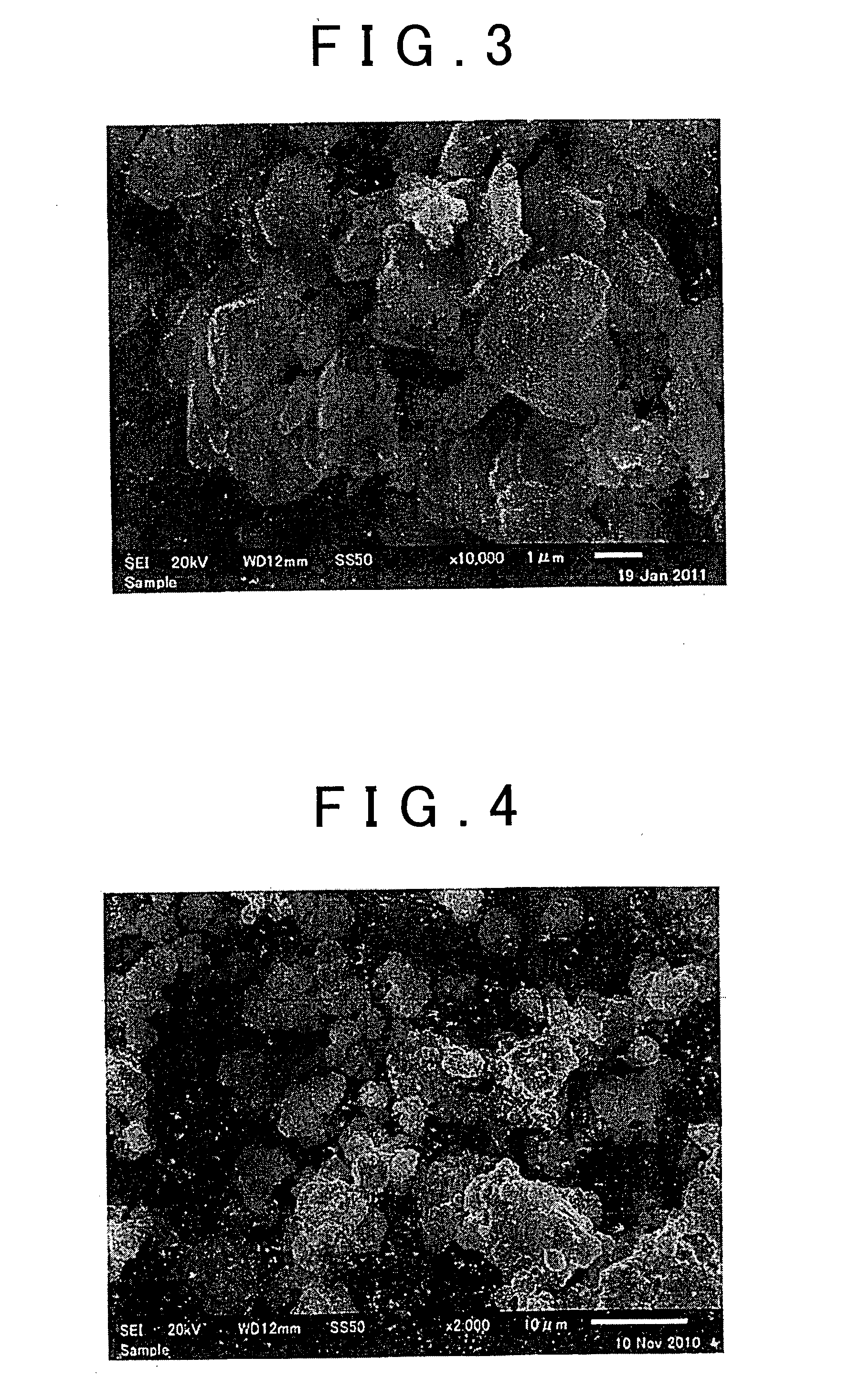Method of producing solid sulfide electrolyte material and solid sulfide electrolyte material
a technology electrolyte, which is applied in the direction of non-aqueous electrolyte cells, cell components, electrochemical generators, etc., can solve the problems of poor solid sulfide electrolyte material productivity, reducing the li ion conductivity of solid sulfide electrolyte materials, and time and labor inputs, etc., to achieve excellent li ion conductivity and easy to produ
- Summary
- Abstract
- Description
- Claims
- Application Information
AI Technical Summary
Benefits of technology
Problems solved by technology
Method used
Image
Examples
production example
Sulfide Glass Synthesis
[0064]Lithium sulfide (Li2S, from Nippon Chemical Industries Co., Ltd., purity=99.9%) and phosphorus pentasulfide (P2S5, from Aldrich, purity=99.9%) were used as the starting materials. Their powders were weighed out in a glove box under an argon atmosphere (dew point=−70° C.) to provide an Li2S:P2S5 molar ratio=70:30 and were mixed with an agate mortar to obtain the starting composition. 100 g of the obtained starting composition was introduced into a 500-mL ZrO2 pot; ZrO2 balls were introduced; and the pot was completely sealed (Ar atmosphere). This pot was installed in a planetary ball mill (P5 from Fritsch Japan Co., Ltd.) and dry mechanical milling was performed for 20 hours at a table revolution rate of 300 rpm to obtain a sulfide glass (70Li2S—30P2S5 glass).
example 1
The Microparticulation Step
[0065]1 g of the sulfide glass obtained in the Production Example, 40 g ZrO2 balls (φ1 mm), 10 g dehydrated heptane (Kanto Chemical Co., Inc.) as solvent, and 0.014 g butylene rubber (from the JSR Corporation) having the amino group as a terminal functional group and added as the adhesive polymer, were introduced into a 45-mL ZrO2 pot and the pot was completely sealed (Ar atmosphere). This pot was installed in a planetary ball mill (P7 from Fritsch Japan Co., Ltd.) and wet mechanical milling was performed for 6 hours at a table revolution rate of 200 rpm to grind the sulfide glass and produce a solid sulfide electrolyte material.
example 2
The Microparticulation Step
[0066]10 g of the sulfide glass obtained in the Production Example, 100 g ZrO2 balls (φ1 mm), 100 g dehydrated heptane (Kanto Chemical Co., Inc.) as solvent, and 0.14 g of the butylene rubber used in Example 1 and added as the adhesive polymer, were introduced into a 500-mL ZrO2 pot and the pot was completely sealed (Ar atmosphere). This pot was installed in a planetary ball mill (P5 from Fritsch Japan Co., Ltd.) and wet mechanical milling was performed for 3 hours at a table revolution rate of 100 rpm to grind the sulfide glass and produce a solid sulfide electrolyte material.
PUM
| Property | Measurement | Unit |
|---|---|---|
| average particle diameter | aaaaa | aaaaa |
| particle diameter | aaaaa | aaaaa |
| particle diameter | aaaaa | aaaaa |
Abstract
Description
Claims
Application Information
 Login to View More
Login to View More - R&D
- Intellectual Property
- Life Sciences
- Materials
- Tech Scout
- Unparalleled Data Quality
- Higher Quality Content
- 60% Fewer Hallucinations
Browse by: Latest US Patents, China's latest patents, Technical Efficacy Thesaurus, Application Domain, Technology Topic, Popular Technical Reports.
© 2025 PatSnap. All rights reserved.Legal|Privacy policy|Modern Slavery Act Transparency Statement|Sitemap|About US| Contact US: help@patsnap.com



